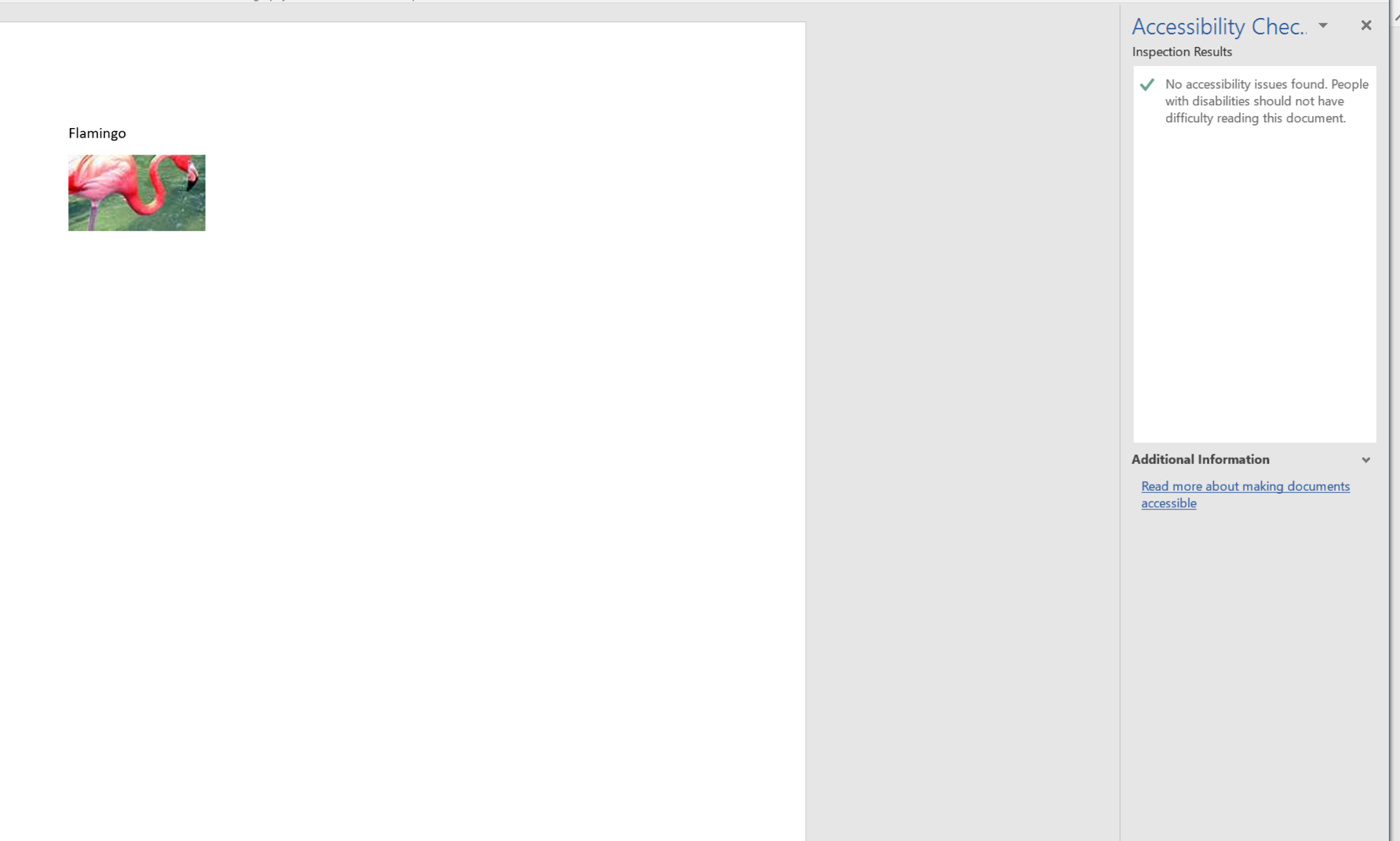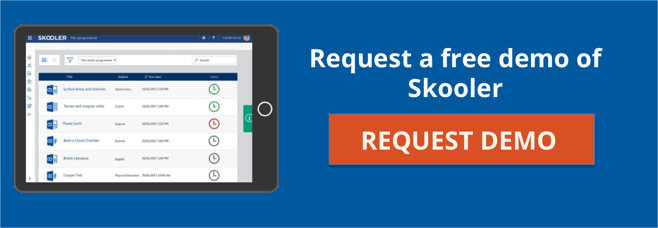In this Blog we'll explore some functions in Word that you might not know about.
You might think you know Word – but do you? Most of us only really use about 10% of the functionality. We'll look at some lesser known functionalities and how they might be useful for teachers.
Have you heard about Smart Lookup?
In Word you can investigate a word or a phrase directly. This can be very useful for students while reading through a text and wondering about the meaning of a word or a phrase. It can also be very useful when they are doing a research task.
How to do it
When you select a word or phrase, right-click it, and choose Smart Lookup, the insights pane will open with definitions, Wiki articles, and top related searches from the web. You can also get to Smart Lookup any time by going to Review > Smart Lookup and entering a query there.
We use the word Flamingo as an example, if you mark the word flamingo, right click and select smart look up your document will look ( almost) like this:
Click on picture for higher resolution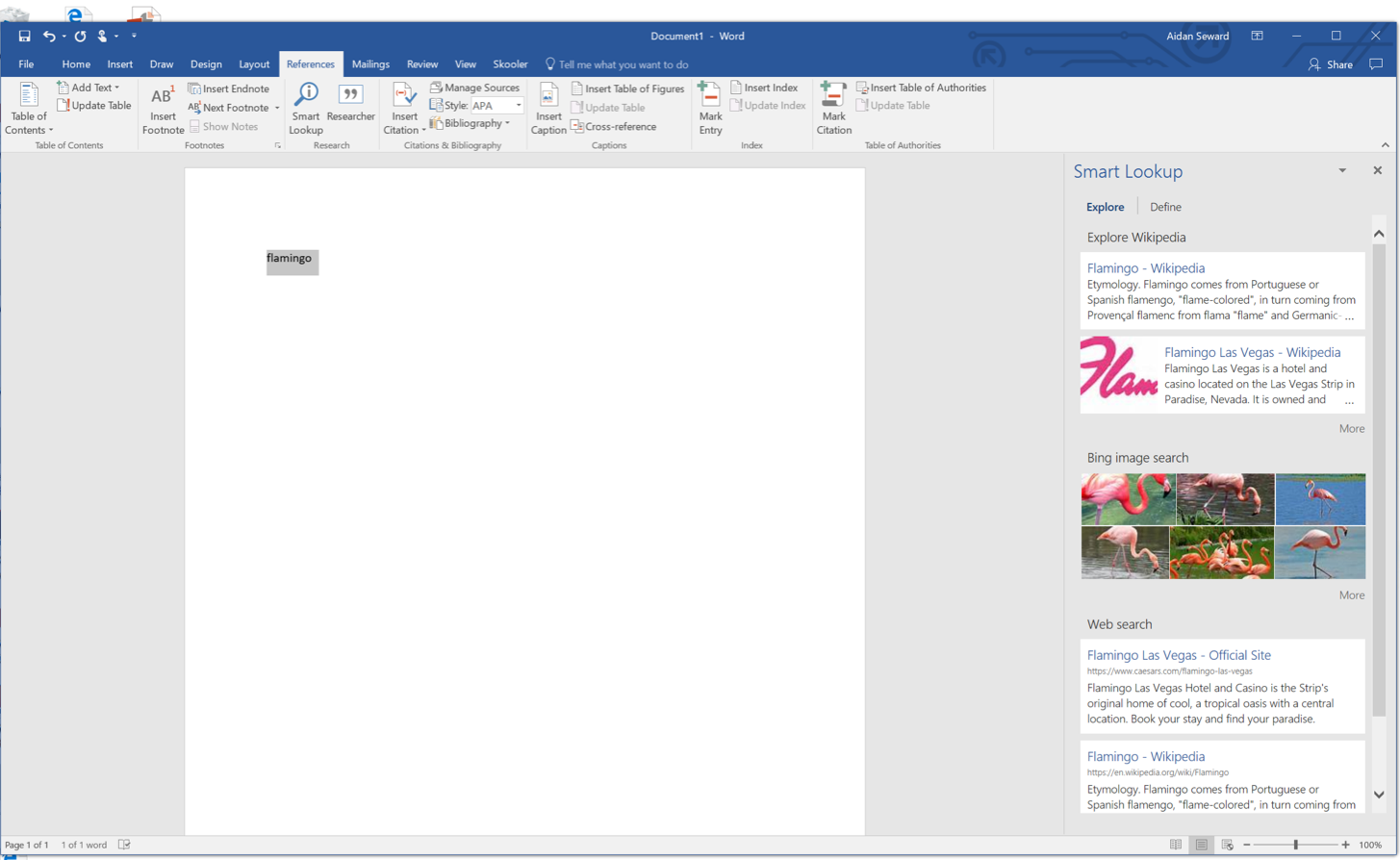
As the pictures shows there is now a new field in our window, named Smart Lookup. And it is this field that shows you the results from picture search and internet search. Using Smart Lookup students can use the web for research directly inside Word – insert pictures, copy text.
There is also an option to select more from each search, selecting more will show you several results from your search.
If you click on an element or a link from Smart lookup, your browser will open and the content will be shown there.
Pictures shown in Smart Lookup tab can be used in your document, right click on the picture, select copy. Set the marker in your document, right click and select paste. Of course we need to make sure that we are allowed to use the picture. Bing has a filter you can select that only shows you pictures allowed used for non-commercial use.
The Word flamingo was easy to understand the meaning of from the Smart look up pictures, but what if we have a word or a phrase that can mean different things when used in different contexts? No worries! In Smart look up you will see that there is also a Definition tab which shows you information about the word or phrase you marked.
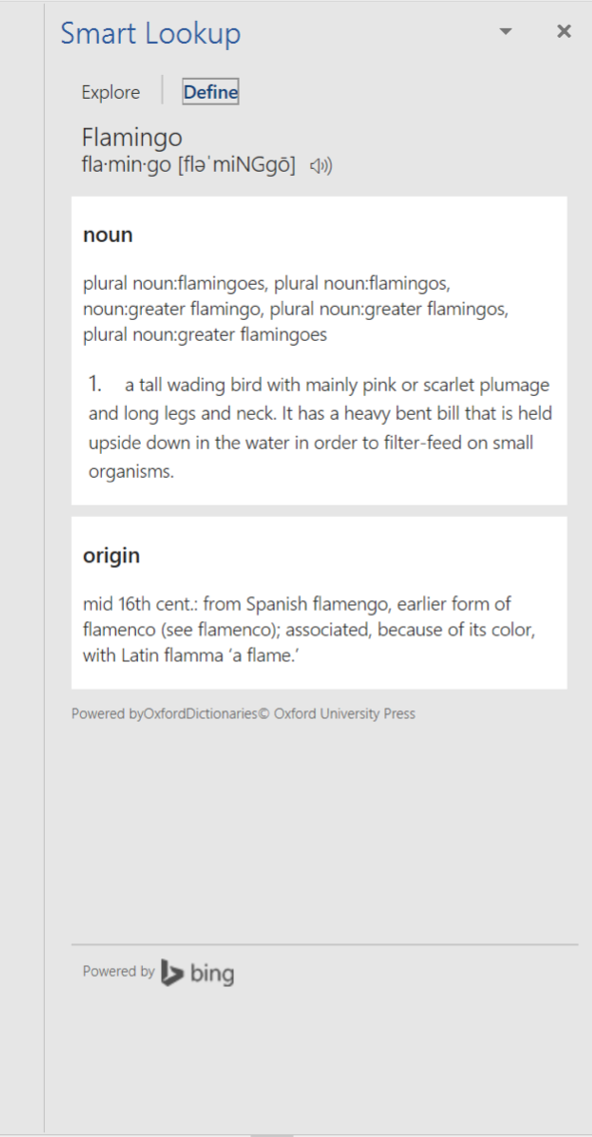
Useful, right?
Do you want more tips and tricks? Try our webinars:
Accessibility Checker tool
The Accessibility Checker tool finds accessibility issues in your Word documents, PowerPoints etc. The tool generates a report of issues that could make your content difficult for people with disabilities to understand, it also explains why you should fix these issues and how to fix them.
How to use it
1. Click File > Info.
2. Select the Check for Issues button.
The Accessibility Checker task panel appears next to your content and shows the results. And tells you what and why you should adjust the listed elements.
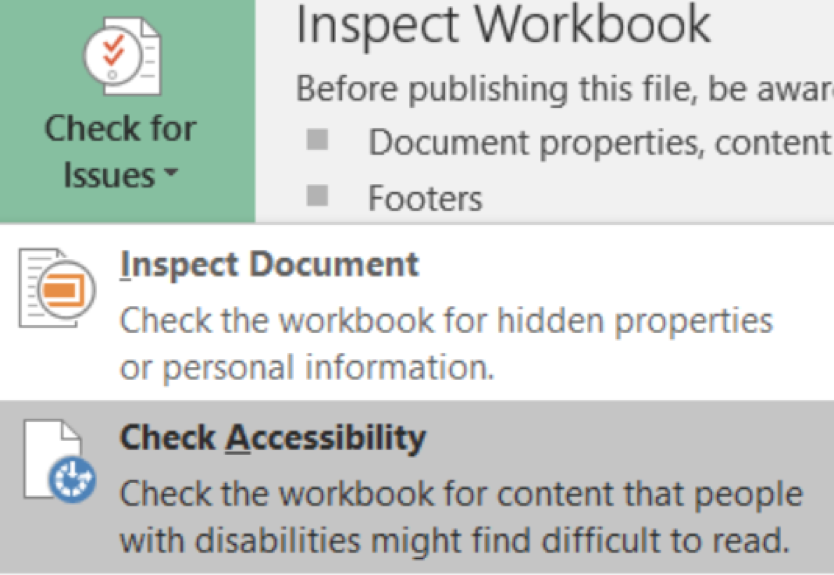
It also categories the findings
Errors: Issues that are reported as errors include content that is very difficult or impossible for people with disabilities to understand.
Warnings: Warnings, in many cases, mean that the content is challenging for people with disabilities to understand
Tips: Tips let you know that, even though people with disabilities can understand the content, it could be better organized or presented to improve their experience.
Click on picture for higher resolution
Skooler Integration
Did you know that Skooler has created an Add-in that makes it possible to grade, and return assignments directly from Word? Read our article: Skoolers amazing integration with Office 365 has taken a new leap forward.

